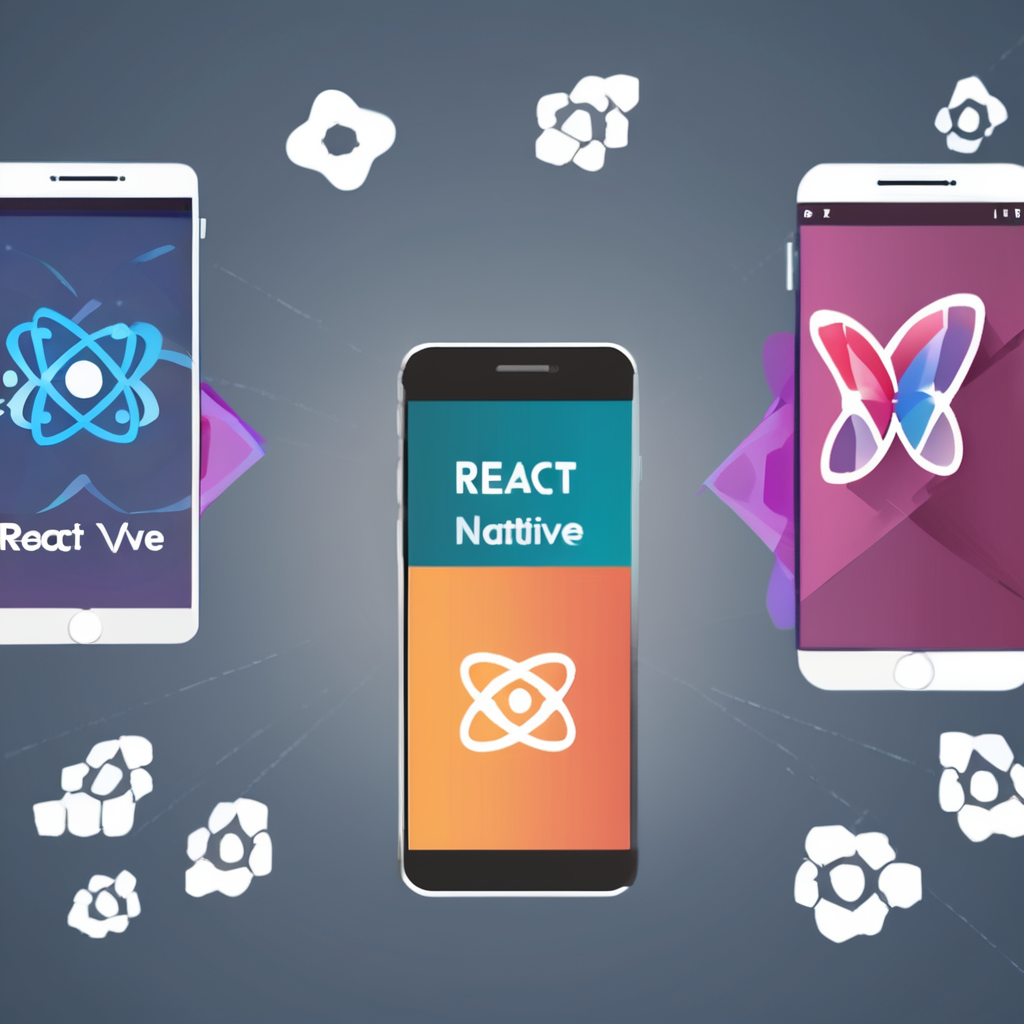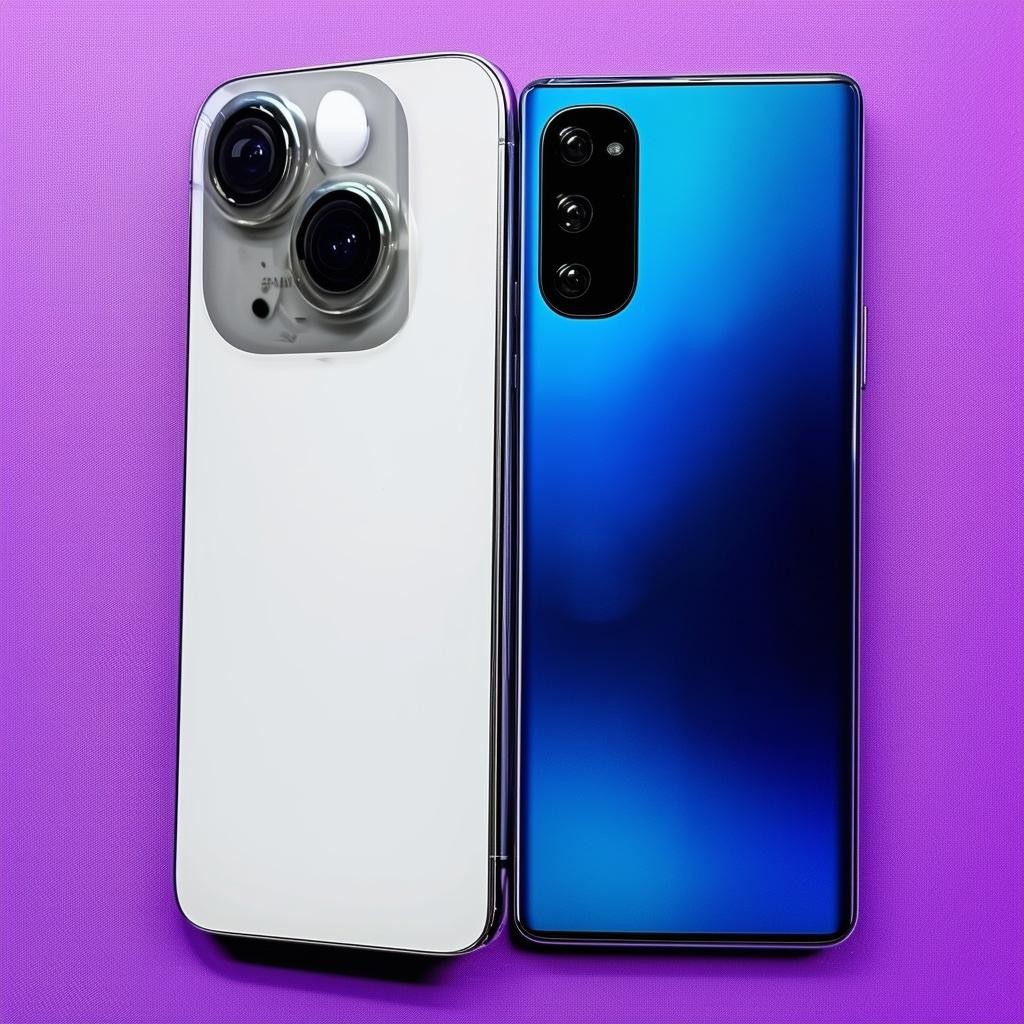When it comes to mobile app development, two popular frameworks often come to mind: React Native and Flutter. Both frameworks have gained significant traction in recent years and have been used to build high-quality mobile applications. However, choosing between the two can be a daunting task for developers and businesses alike. In this article, we'll dive deeper into the comparison between React Native and Flutter, examining their strengths, weaknesses, and suitability for different project requirements.
1. Performance
Performance is a critical factor in mobile app development, as users expect fast and responsive applications. Let's see how React Native and Flutter stack up in terms of performance:
- Flutter: Flutter takes a unique approach to performance by compiling the code directly to native machine code. This eliminates the need for a JavaScript bridge, resulting in faster execution and smoother animations. Flutter's architecture allows for efficient rendering and minimizes the performance overhead, making it a strong contender in terms of performance.
- React Native: React Native, on the other hand, relies on a JavaScript bridge to communicate with the native components. While this approach provides near-native performance, it can introduce some performance overhead, especially when dealing with complex UI interactions or heavy computations. However, React Native has been continuously improving its performance with each update, and recent versions have shown significant enhancements.
2. Development Language
The choice of development language is another important consideration when selecting a framework. Let's explore the languages used by React Native and Flutter:
- Flutter: Flutter uses Dart, an object-oriented programming language developed by Google. Dart is designed to be easy to learn, especially for developers with experience in languages like C++, Java, or JavaScript. It offers a clean and concise syntax, making it enjoyable to work with. Dart also has strong typing and supports just-in-time (JIT) and ahead-of-time (AOT) compilation, enabling fast development cycles and optimized production builds.
- React Native: React Native, as the name suggests, is based on the React library and uses JavaScript as its primary language. JavaScript is a widely-known and popular language among web developers, making it easier for them to transition to mobile app development with React Native. React Native also supports using TypeScript, a typed superset of JavaScript, which adds static typing and improved tooling to enhance developer productivity and code maintainability.
Here's an example of how a simple "Hello, World!" app would look like in both Flutter (Dart) and React Native (JavaScript):
Flutter (Dart):
import 'package:flutter/material.dart';
void main() {
runApp(MyApp());
}
class MyApp extends StatelessWidget {
@override
Widget build(BuildContext context) {
return MaterialApp(
title: 'Hello, World!',
home: Scaffold(
appBar: AppBar(
title: Text('Hello, World!'),
),
body: Center(
child: Text('Hello, World!'),
),
),
);
}
}
React Native (JavaScript):
import React from 'react';
import { View, Text } from 'react-native';
const App = () => {
return (
<>Hello, World!</>
);
};
export default App;
3. UI Components and Customization
Creating visually appealing and intuitive user interfaces is a key aspect of mobile app development. Both React Native and Flutter provide a set of UI components and customization options, but they differ in their approach:
- Flutter: Flutter takes a widget-centric approach to building user interfaces. It provides a rich set of customizable widgets that follow Material Design and Cupertino (iOS) design guidelines out of the box. These widgets are highly flexible and can be easily styled and composed to create complex UI layouts. Flutter's declarative UI framework allows for seamless integration of UI components and makes it easy to create consistent and visually appealing interfaces across different platforms.
- React Native: React Native leverages native UI components provided by the platform (iOS or Android) to render the user interface. This approach ensures that the app looks and feels native to the platform, providing a familiar user experience. However, customizing the UI components in React Native may require additional effort and platform-specific code. React Native does offer a set of pre-built UI components through libraries like React Native Elements or NativeBase, which can speed up development and provide a consistent look and feel.
4. Development Speed
Development speed is a crucial factor for businesses and developers looking to bring their mobile apps to market quickly. Let's compare the development speed of React Native and Flutter:
- Flutter: Flutter boasts a fast development cycle thanks to its hot reload feature. Hot reload allows developers to make changes to the code and see the results instantly without losing the current app state. This feature significantly speeds up the development process, as developers can quickly iterate on the UI and logic without the need for a full app restart. Flutter's widget-based architecture and rich set of pre-built widgets also contribute to faster development, as developers can quickly compose and customize UI components.
- React Native: React Native also offers a hot reload feature, enabling developers to see the changes they make in real-time. However, certain complex changes or modifications to native modules may require a full app reload, which can be slightly slower compared to Flutter's hot reload. React Native's component-based architecture and the use of JavaScript also contribute to faster development cycles, as developers can leverage their existing web development skills and reuse code across platforms.
5. Community and Ecosystem
A strong community and ecosystem are essential for the long-term success and growth of any framework. Let's explore the community and ecosystem aspects of React Native and Flutter:
- Flutter: Despite being relatively newer compared to React Native, Flutter has quickly gained popularity and has a rapidly growing community. The Flutter community is active and vibrant, with a wide range of packages, plugins, and tools available to extend the framework's capabilities. Flutter has a dedicated package repository called pub.dev, which hosts a vast collection of packages contributed by the community. The Flutter team at Google is also actively involved in the development and improvement of the framework, ensuring regular updates and addressing community feedback.
- React Native: React Native benefits from the extensive and mature ecosystem of the JavaScript and React communities. Being one of the pioneers in the cross-platform mobile development
Here are some examples of successful mobile apps built with React Native and Flutter:
React Native Apps:
- Facebook: Facebook, the social media giant, uses React Native for several of its mobile app components, including the Facebook Ads Manager app.
- Instagram: Instagram, the popular photo and video sharing app, leverages React Native for its mobile application, allowing for smooth performance and cross-platform development.
- Walmart: Walmart, one of the largest retailers in the world, rebuilt their mobile app using React Native, resulting in improved performance and user experience.
- Airbnb: Airbnb, the well-known vacation rental platform, extensively used React Native for their mobile app before eventually transitioning to native development.
- Wix: Wix, a popular website builder, uses React Native for their mobile app, enabling users to manage their websites on the go.
Flutter Apps:
- Google Ads: Google Ads, the advertising platform by Google, uses Flutter for its mobile app, providing a seamless experience for managing ad campaigns.
- Alibaba: Alibaba, the e-commerce giant, has adopted Flutter for their Xianyu app, which is a second-hand trading platform.
- Tencent: Tencent, a leading Chinese technology company, uses Flutter for several of their mobile applications, including the NOW Live app for live streaming.
- Reflectly: Reflectly is a popular journaling and mindfulness app built entirely with Flutter, showcasing the framework's capabilities for building beautiful and engaging user interfaces.
- Hamilton: The Hamilton app, the official app for the Broadway musical, is built using Flutter, providing an immersive experience for fans with interactive features and exclusive content.
These are just a few examples of the many successful mobile apps built with React Native and Flutter. Both frameworks have been adopted by a wide range of companies and industries, from social media and e-commerce to productivity and entertainment. The choice between React Native and Flutter often depends on the specific requirements of the project, the development team's expertise, and the desired user experience.
It's worth noting that both React Native and Flutter have been used to build high-quality, performant, and visually appealing mobile applications across various domains. As the frameworks continue to evolve and mature, we can expect to see even more impressive and innovative apps being developed using these technologies in the future.
Conclusion
In conclusion, React Native and Flutter are both powerful frameworks for mobile app development, each with its own strengths and considerations. React Native offers a mature ecosystem, a large community, and the ability to leverage existing JavaScript and React skills. On the other hand, Flutter provides excellent performance, a rich set of customizable UI components, and faster development cycles with its hot reload feature.
Ultimately, the choice between React Native and Flutter depends on various factors such as the specific requirements of your project, the expertise of your development team, the desired user experience, and the long-term goals of your mobile app. It's recommended to evaluate both frameworks, consider the factors discussed in this article, and make an informed decision based on your unique needs and priorities.
Regardless of which framework you choose, both React Native and Flutter have proven track records of building successful and high-quality mobile applications. They offer the opportunity to create engaging, performant, and cross-platform apps that can reach a wide audience and deliver exceptional user experiences.








